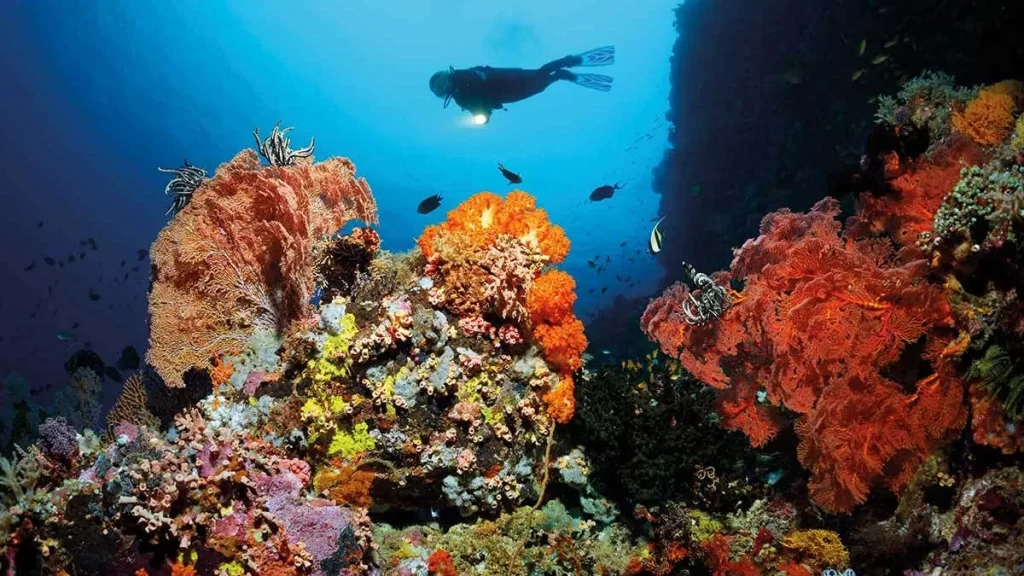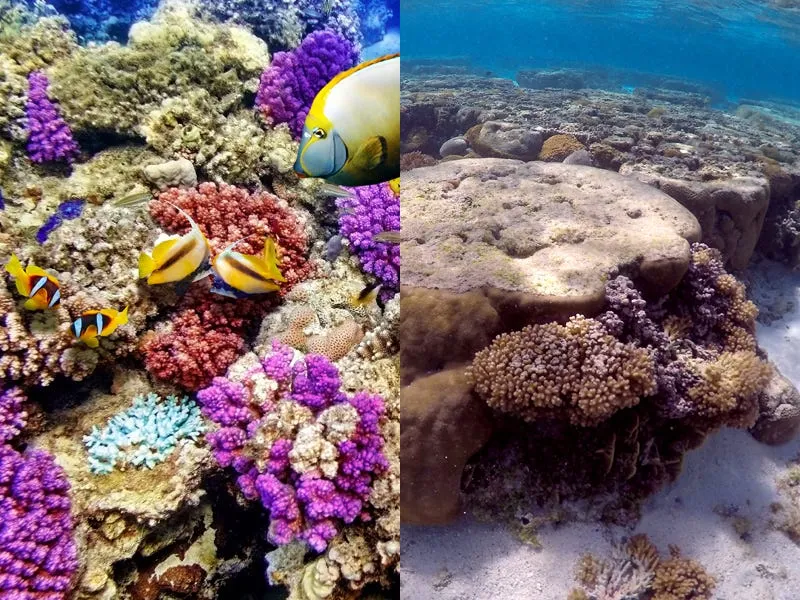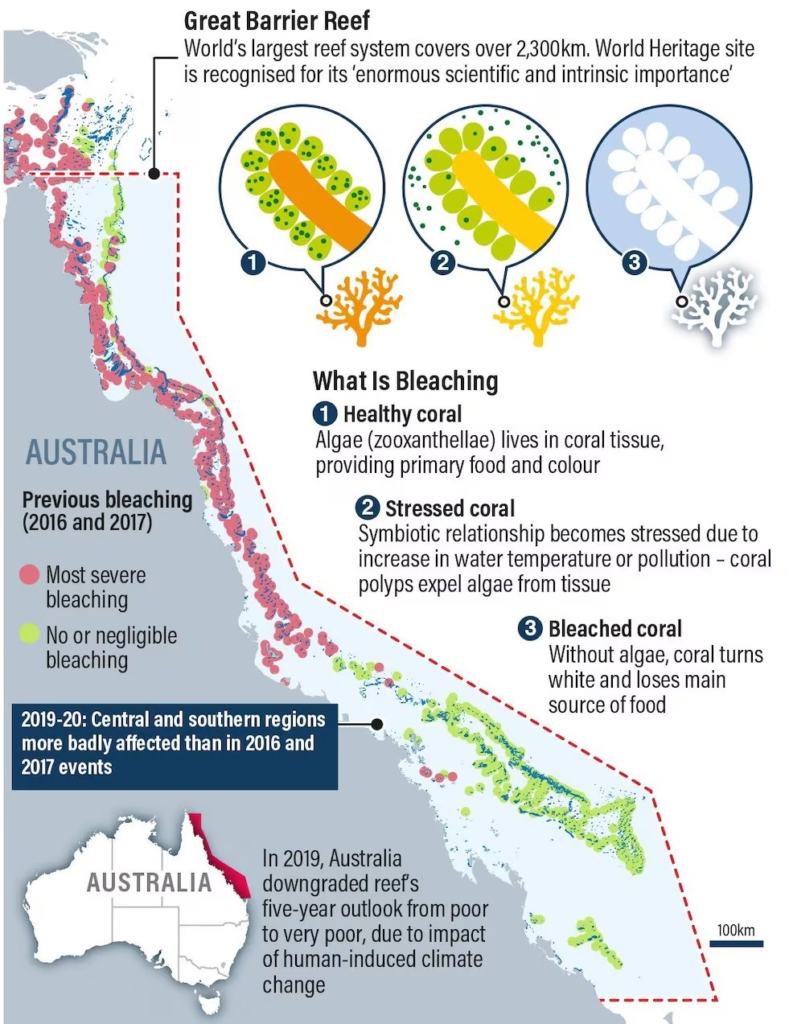In recent news, Australian authorities’ aerial surveys have revealed extensive coral bleaching affecting approximately two-thirds of the Great Barrier Reef (GBR). This alarming situation underscores the urgent need for action to address the threats exacerbated by climate change and safeguard this crucial marine ecosystem.
Ref :https://indianexpress.com/article/explained/explained-climate/global-mass-coral-bleaching-triggered-9279731/
The Great Barrier Reef
- The Great Barrier Reef (GBR) is the world’s largest coral reef system, located off the coast of Queensland, Australia, in the Coral Sea.
- It spans approximately 2,300 km and consists of around 3,000 individual reefs and 900 islands.
- Home to a rich diversity of marine life, including 400 types of coral and 1,500 species of fish. It provides habitat for endangered species like the dugong and large green turtle.
- Designated as a UNESCO World Heritage site in 1981, the GBR faced evaluation by the UNESCO Heritage Committee in 2023.
- While it wasn’t labelled as “in danger,” concerns were raised regarding ongoing threats such as pollution and ocean warming.
- The phenomenon of mass bleaching has occurred on the GBR multiple times, notably in 1998, 2002, 2016, 2017, 2020, 2022, and most recently in 2024.

Factors Contributing to Coral Bleaching in GBR:
Temperature Stress:
Impact of Climate Change: Rising ocean temperatures, driven by climate change, heighten coral vulnerability to stress and mortality, leading to widespread bleaching events globally, often exacerbated by El Niño conditions.
Other Environmental Stressors: Various environmental factors such as cold water temperatures, pollution, runoff, and extreme low tides can also trigger coral bleaching, underscoring the complex nature of this phenomenon.
Algal Relationship: Coral bleaching results from disruptions to the symbiotic relationship between corals and algae, affecting the corals’ food supply and rendering them prone to diseases.

Implications of Coral Bleaching :
Ecological Consequences: Coral reefs are known as the “Rainforests of the seas“. They play a crucial role in supporting a diverse array of marine life.
Coral bleaching results in habitat loss and decreased biodiversity. It affects fish populations, marine flora, and other organisms reliant on coral reef ecosystems for survival.
Indicator of Climate Change: It acts as a visible signal of climate change’s impact on marine ecosystems.
Economic Ramifications: Coral reefs serve as valuable assets for coastal protection, tourism, and fisheries. They contribute significantly to society with an estimated annual value of USD 375 billion. The deterioration of coral reefs due to bleaching can have economic implications. It impacts sectors like tourism and fishing that depend on healthy reef ecosystems.
Food Security Concerns: Millions of people worldwide rely on coral reefs for food and livelihoods. Coral bleaching jeopardises seafood availability. It can disrupt the livelihoods of communities dependent on fishing and reef-based tourism.
Diminished Ecosystem Services: Coral reefs provide essential ecosystem services such as shoreline protection, nutrient cycling, and carbon sequestration. Bleaching reduces reefs’ ability to provide these services.


Leave a Reply
You must be logged in to post a comment.